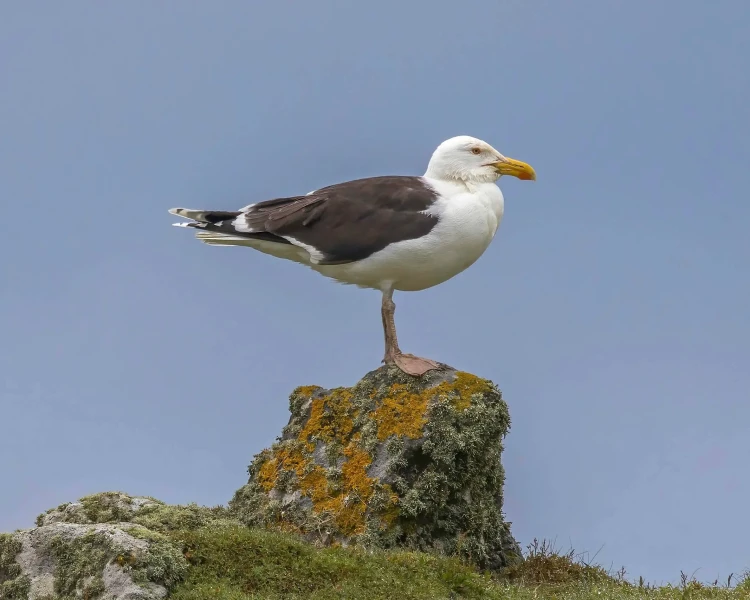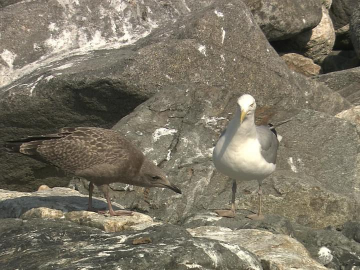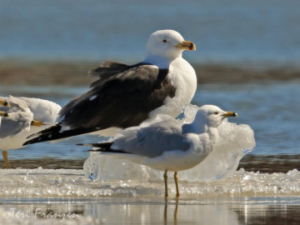Gulls

Image: Great black-backed gull
Gulls are birds that everyone knows and loves. Well, maybe not love, being known as the French fry thieves of the beach. While commonly called “seagulls,” this is a misnomer as there are fifty different species within the family of gulls. In Massachusetts, there are three common gull species: the ring-billed gull, the great black-backed gull, and the herring gull. Each species has its own variety of unique characteristics, calls, and behaviors.
When imagining the stereotypical beach bird, a herring gull comes to mind. With a white body and grey wings, these are one of the most common species of gulls seen within the harbor. They have the largest and heaviest eggs in the family as well as the highest hatching success rates. The juveniles look much different than their adult counterparts, where their bodies are checkered with brown and white spots. They do not fully grow into the adult plumage until they are into their third year of life. Most gulls live between eight to twenty years of age, but the oldest individual recorded was a herring gull that was a mighty 49 years old. Due to a lack of predators and their generalist lifestyle, these birds have slower lifecycles and longer lives than many other bird species.

Image 1. An adult herring gull on the right and a juvenile herring gull on the left.
The largest gull species in the world is the great black-backed gull. They are considered an apex predator, being able to dominate other species and even consume other birds, such as puffins. They are opportunistic feeders, whose diet consists of up to fifty percent scraps. The rest of their diet is omnivorous, including shellfish, berries, rodents, and fish. Their feathers were used for clothing and accessories during the 1800’s leading to near extinction. Their population rebounded by the 1960’s after the fall of the feather trade as well as protective laws put in place.

Image 2: Great black-backed gull and a ring-billed gull.
The smallest of the common species in this area is the ring-billed gull. To differentiate between the herring gull and the ring-billed gull is to look at both size and beak of both species. The ring-billed gull has the thin line around its beak giving it its name, as well as being the size of a pigeon versus the herring gull being the size of a large crow. Many individuals of this species will return yearly to nest at the same site that they were hatched. Common to Boston and the Islands, they are social birds that tend to feed and nest in large groups. Their diets vary from other gull species to include foraging for earthworms, insects, grain, and fish.
The gull family are monogamous breeders, where they will mate with one partner for life. When raising young, gulls participate in bi-parental care, where both adults help watch the eggs, and later their chicks. Gull chicks will start flying at around five to eight weeks old.
Due to gulls consuming various types of shellfish and other shoreline delectables, the Boston Harbor Islands is a great environment for them to live. The common gull species can be seen on the islands and over the open water within the harbor, usually searching for food or somewhere to rest. While on island, this family of birds is guaranteed to be spotted. While doing so, perhaps watch the behaviors of these intelligent birds and consider how they have overcome harsh environments and consume anything that will give them the nutrition that they need.
Sources:
Great Black-Backed Gull – Facts, Diet, Habitat & Pictures on Animalia.bio
Great Black-backed Gull Overview, All About Birds, Cornell Lab of Ornithology Gulls
Herring Gull Identification, All About Birds, Cornell Lab of Ornithology
https://www.audubon.org/field-guide/bird/great-black-backed-gull